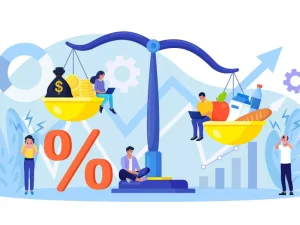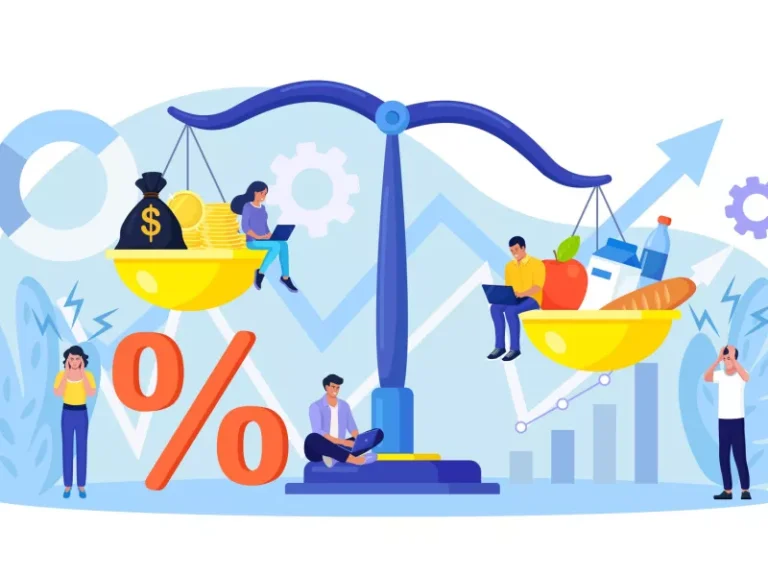Introduction
Understanding how asset prices move is core to successful investing and quantitative trading. Two of the most important and widely studied empirical regularities in financial markets are price momentum and mean reversion. Although they might sound like opposites, they are complementary features of asset return dynamics observed over different time horizons and market conditions. This article explores both phenomena in depth — their empirical evidence, theoretical drivers, practical trading strategies, implementation challenges, and risk management — so you can apply these ideas thoughtfully in portfolio construction, research, or trading strategies.
What is Price Momentum?
Definition and intuition
Price momentum refers to the tendency of assets that have performed well in the recent past to continue performing well in the near future, and conversely for past losers to continue underperforming. In simple terms: winners keep winning and losers keep losing over the momentum horizon.
Momentum is typically measured by past returns over a lookback window (e.g., 3, 6, or 12 months) and implemented by taking long positions in past winners and short positions in past losers. The strategy profits if relative performance persists over the holding period.
Empirical evidence
- Momentum has been observed across asset classes — equities, commodities, currencies, and bonds — and across countries and market regimes.
- Academic studies show that a 12-month lookback (skipping the most recent month to avoid microstructure effects) with a 3–12 month holding period produces robust historical excess returns for equities.
- Cross-sectional momentum (ranking assets against peers) and time-series momentum (trend-following based on absolute past returns) are two common implementations; both have empirical support but different risk profiles.
Why momentum works — behavioral and risk explanations
Behavioral explanations
- Underreaction: Investors are slow to fully incorporate new information into prices, so trends persist.
- Disposition effect: Investors sell winners too early and hold losers too long, exaggerating trends.
- Herding and attention: Money flows into assets that recently performed well, reinforcing price moves.
Risk-based explanations
- Some models argue momentum earns compensation for bearing time-varying or state-dependent risk (e.g., exposure to crash risk or liquidity risk).
- Momentum may load on macroeconomic or sentiment factors not fully captured by standard risk models.
What is Mean Reversion?
Definition and intuition
Mean reversion is the tendency of an asset’s price or returns to move back toward a long-term average after deviating from it. If an asset rises sharply above its typical level, mean reversion predicts downward pressure ahead, and vice versa.
Mean reversion can show up in price levels, valuations (like price-to-earnings ratios), or returns on certain horizons (often longer-term than momentum).
Empirical evidence
- Long-horizon studies (multi-year) often find return reversals: stocks that performed extremely well over 3–5 years tend to underperform over the next 3–5 years, and vice versa.
- Valuation metrics (P/E, dividend yield) tend to revert slowly to historical averages, suggesting mean reversion in levels and expected returns.
- Mean reversion is particularly visible at longer horizons and after large shocks such as earnings surprises, credit events, or regime changes.
Why mean reversion occurs
- Fundamental re-evaluation: Over long periods, fundamentals (earnings, cash flows) drive prices back in line with intrinsic value.
- Overreaction correction: Short-term overreactions to news or sentiment often unwind, causing reversals.
- Liquidity and institutional trading patterns: Forced selling or buying can push prices away from fundamentals temporarily; once flows subside, prices revert.
How Momentum and Mean Reversion Coexist
Time-scale separation
- Momentum typically dominates intermediate horizons (weeks to 12 months).
- Mean reversion is more evident at longer horizons (multi-year) and occasionally at very short horizons due to microstructure effects (bid-ask bounce).
- This time-scale separation means both phenomena can be exploited: trend-followers capture the medium-term persistence while value and mean-reversion strategies harvest long-term corrections.
Regime dependence
- Market regimes (bull vs. bear, high vs. low volatility) affect which effect dominates. Momentum might be stronger during trending markets; mean reversion stronger when markets overshoot and then correct.
- Combining both strategies can diversify regime exposure: when momentum falters, mean reversion signals may pick up, and vice versa.
Popular Strategy Implementations
Momentum strategies
- Cross-sectional momentum: Rank assets by past returns; long top decile, short bottom decile. Rebalance monthly.
- Time-series momentum (trend-following): Go long an asset if its past return over a lookback window is positive and short if negative. Works well across asset classes.
- Residual momentum: Remove common factor returns (market, size, value) and apply momentum to residuals — isolates idiosyncratic momentum.
Mean-reversion strategies
- Value investing: Buy undervalued securities based on valuation ratios (P/E, P/B) and hold long-term.
- Statistical arbitrage: Use cointegration and pairs trading to exploit short- to medium-term deviations between related assets.
- Volatility-targeted rebalancing: Systematic rebalancing toward target weights creates implicit mean-reversion capture through buying dips and selling rallies.
Hybrid approaches
- Multi-horizon portfolios: Allocate to momentum for short-to-medium alpha and to value/mean-reversion for long-term rebalancing.
- Signal blending: Combine momentum scores with valuation or carry metrics to form composite rankings; helps reduce tail-risk and improve diversification.
- Volatility and drawdown filters: Use volatility-adjusted momentum or mean reversion conditional on drawdown levels to reduce crash exposure.
Implementation Details and Practical Considerations
Lookback and holding periods
- There is no universally optimal window; common choices are 3, 6, 9, 12 months for momentum and 3–5 years for mean reversion studies.
- Practitioners often test multiple windows and ensemble them to smooth signals and reduce sensitivity to one parameter.
Transaction costs and liquidity
- Momentum strategies require frequent turnover; commissions, bid-ask spreads, and market impact materially lower net returns.
- Use liquidity filters (minimum market cap, ADV thresholds) and slippage models to ensure implementability.
- Mean-reversion/value strategies are usually lower-turnover, making them more robust to costs.
Portfolio construction and sizing
- Normalize signals to make them comparable across assets (z-scores, rank transforms).
- Apply volatility scaling to equalize risk contribution across positions.
- Control concentration and sector biases — momentum can crowd into similar securities, creating correlated drawdowns.
Risk management
- Momentum strategies can suffer from severe momentum crashes — sudden reversals when multiple momentum trades unwind. Use stop-losses, diversification, and tail-risk hedging.
- Mean-reversion strategies face long stretch of underperformance during trending markets; size positions appropriately and maintain patience.
- Monitor scenario and stress tests, especially for cross-asset implementations.
Statistical and Econometric Tools
Backtesting essentials
- Use out-of-sample testing and walk-forward analysis to prevent overfitting.
- Apply realistic assumptions for transaction costs, delays, and fill rates.
- Be aware of data-snooping biases and survivorship bias — use complete historical datasets including delisted securities.
Signal evaluation
- Sharpe ratio, Information ratio, maximum drawdown, and Calmar ratio are common performance metrics.
- Examine tail risk measures (VaR, expected shortfall) because momentum and mean reversion have different tail behaviors.
- Assess turnover, hit-rate, and average gain/loss per trade to understand operational and behavioral characteristics.
Advanced methods
- Machine learning: Nonlinear models and ensemble methods can combine momentum and mean-reversion signals but require strong regularization and interpretability controls.
- Factor decomposition: Decompose returns into common factors (market, value, size, momentum) to understand exposures.
- Regime detection: Hidden Markov Models or regime classifiers can adapt strategy weights depending on prevailing market conditions.
Behavioral and Market Microstructure Considerations
- Crowding: Many funds exploiting momentum create crowded trades; when the sentiment shifts, quick unwinds can cause abrupt reversals.
- Noise traders: Retail behavioral biases (overreaction, underreaction) are a source of persistent patterns that both momentum and mean reversion can exploit.
- Market microstructure: At very short horizons, effects like bid-ask bounce and stale pricing can mimic mean reversion; careful filtering is required.
Case Studies and Examples
Equity momentum crash example (conceptual)
- In periods following large market rebounds or sudden positive news, momentum portfolios can experience sharp reversals caused by rotation from previously leading sectors into beaten-down areas. This was observed historically during several short-lived but severe drawdowns in momentum indices.
Value mean-reversion success story (conceptual)
- Value investors who buy deeply discounted firms after earnings shocks or cyclical downturns often realize above-market returns over multi-year horizons as earnings recover and market sentiment normalizes.
How Practitioners Combine the Two
- Diversified multi-strategy funds often hold momentum, value, carry, and trend strategies simultaneously to capture different behavioral and risk premia.
- Tactical overlay: Use momentum signals tactically to adjust exposure to long-term mean-reverting allocation (e.g., temporarily reduce value exposure during strong trending regimes).
- Volatility-adaptive sizing: Increase allocations to strategies with favorable risk-adjusted returns adjusted for current volatility and drawdown.
Common Pitfalls and How to Avoid Them
- Overfitting to historical momentum windows or value metrics — mitigate with simplicity and cross-validation.
- Ignoring trading frictions — always model realistic execution costs.
- Failing to account for changing market structure — periodically recalibrate models and monitor signal decay.
- Excess concentration in crowded factors — enforce diversification constraints and limits on factor exposures.
Conclusion
Price momentum and mean reversion are two cornerstone phenomena in finance that describe how assets move across different time horizons. Momentum captures intermediate-term persistence driven by behavioral biases and slow information diffusion, while mean reversion captures longer-term corrections toward fundamental values. Savvy practitioners do not treat these effects as mutually exclusive — they design portfolios that harvest both, blending horizons, controlling costs, and managing the distinct risks each presents. The art and science of combining momentum and mean reversion lie in careful signal design, rigorous backtesting, realistic implementation assumptions, and disciplined risk management.
Frequently Asked Questions (FAQ)
1. How do I choose the lookback period for a momentum strategy?
Choosing a lookback period involves balancing signal strength and turnover. Common practice is to test 3, 6, 9, and 12 months and then either pick the most robust or ensemble them. Also consider transaction costs and the asset class’ liquidity when deciding.
2. Can momentum and mean reversion signals be applied to cryptocurrencies?
Yes, both phenomena have been observed in cryptocurrencies, though markets are noisier and evolving. High transaction costs, exchange-specific risks, and rapid regime shifts require careful implementation and risk controls.
3. How do I protect a momentum strategy from sudden reversals?
Use diversification across assets, position limits, stop-loss rules, volatility scaling, and consider overlay hedges (e.g., options). Additionally, monitoring crowding indicators and liquidity metrics helps anticipate unwind risk.
4. Is value investing the same as mean reversion?
Value investing is a form of mean reversion but focused on valuation measures. While mean reversion is a broader concept (it can apply to price levels, spreads, or ratios), value investing specifically targets undervalued securities expected to revert toward fundamentals.
5. Should I combine momentum and mean reversion in one model or keep them separate?
Both approaches have merits. A combined model can exploit interactions and reduce single-strategy drawdowns, but complexity and overfitting risk increase. Many practitioners use separate allocations with governance rules or simple signal blends.
6. How important are transaction costs when implementing these strategies?
Very important. Momentum often has high turnover, making execution costs a major drag on net returns. Always include commissions, spreads, and market impact in backtests and prefer liquid instruments or larger market-cap thresholds.
7. What indicators show a momentum strategy is becoming crowded?
Sharp compressions in expected alpha, rising correlation among momentum positions, increased option implied volatility near potential reversal events, and population-level leverage metrics are signs of crowding. Monitoring fund flows to momentum-focused ETFs and mutual funds also provides clues.


















